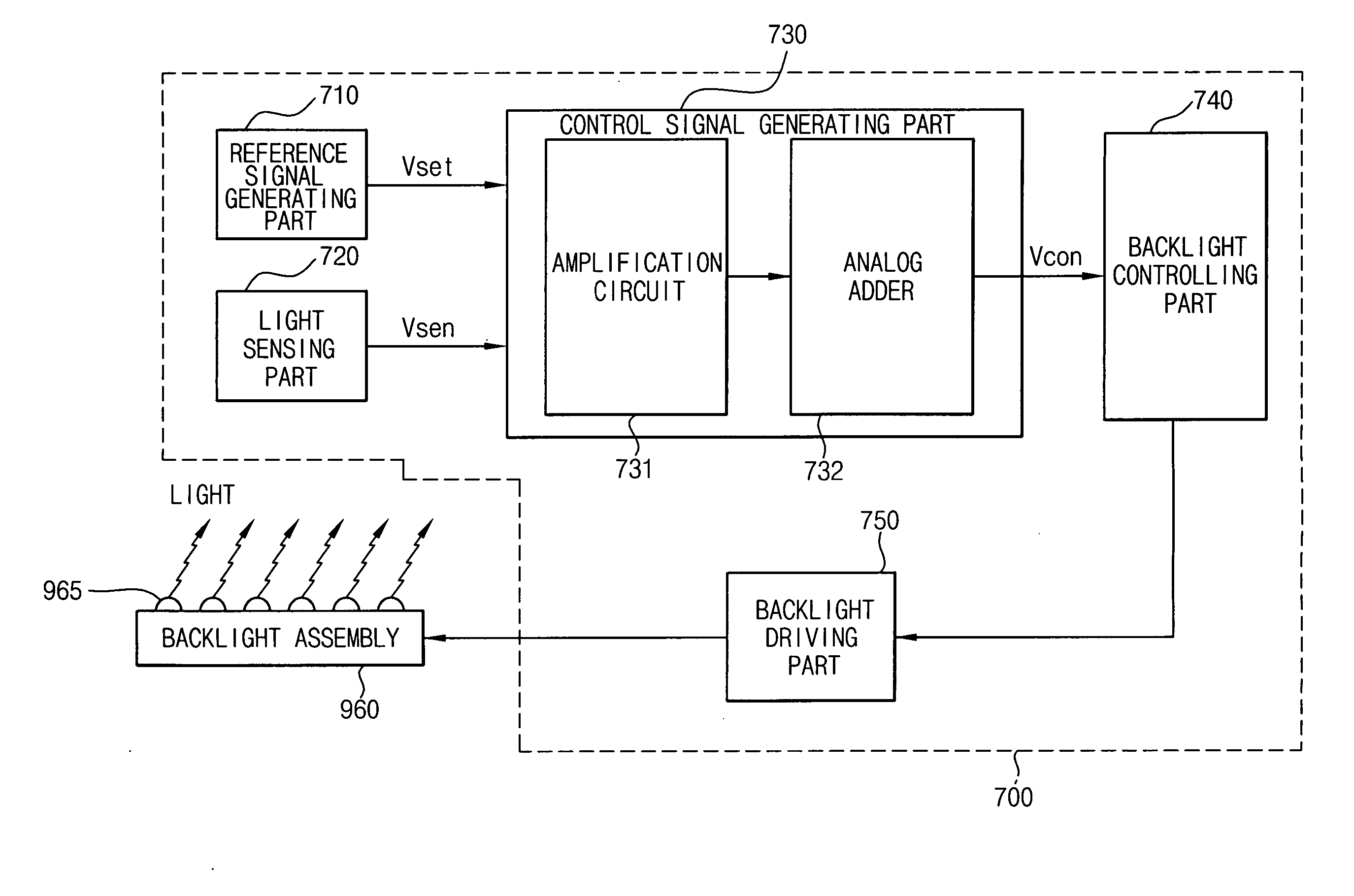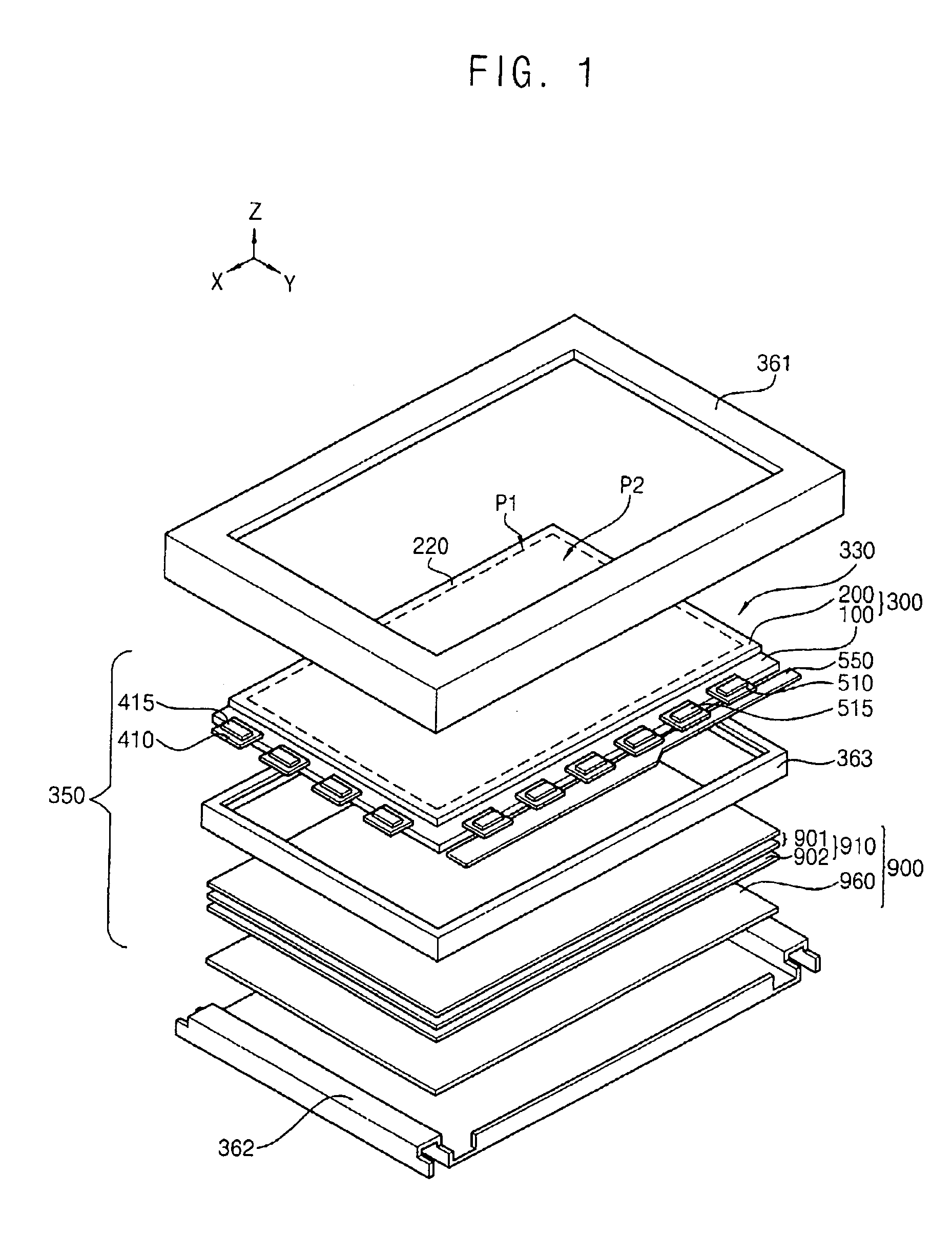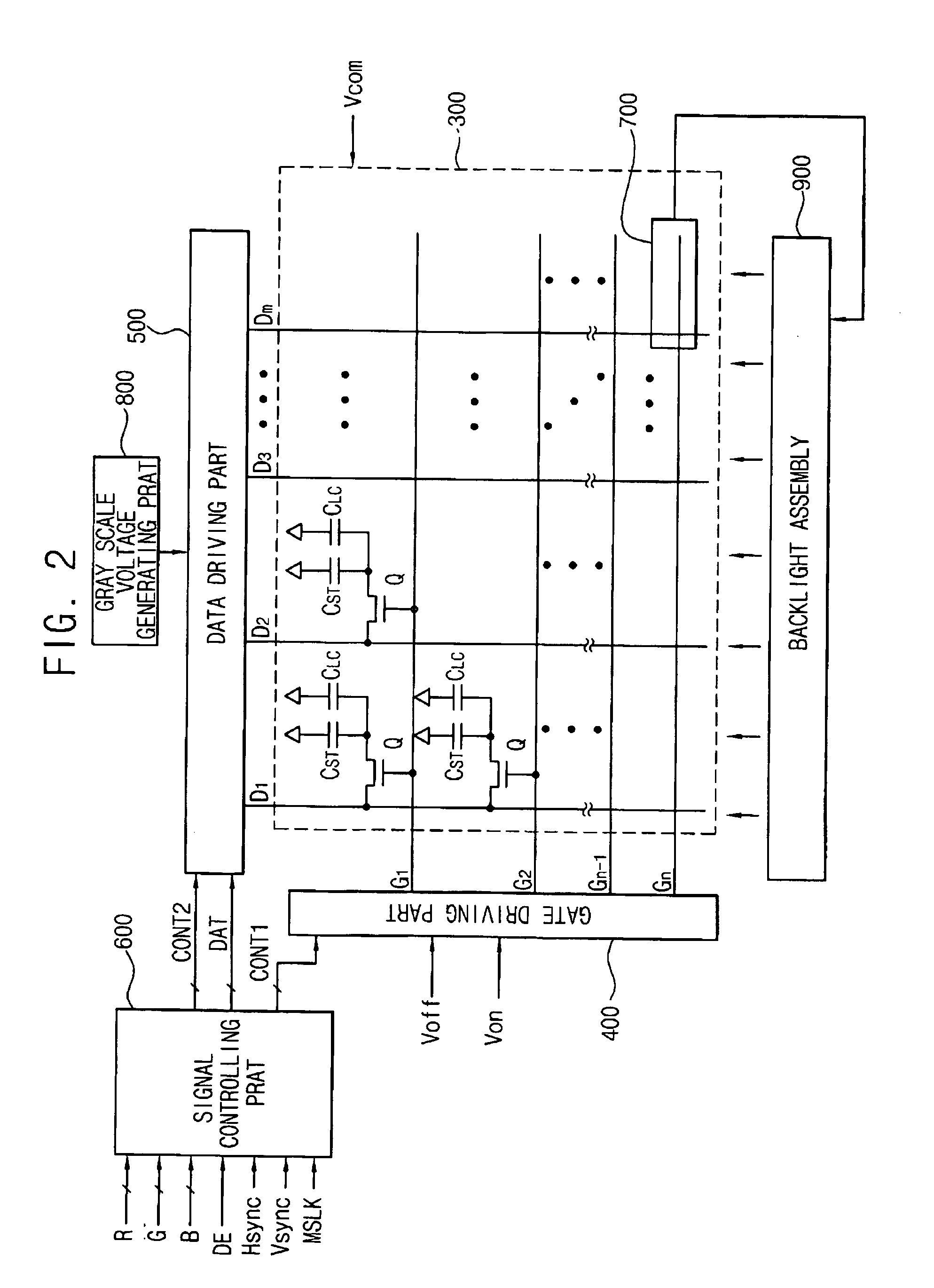Liquid crystal display apparatus, light-sensing element and apparatus for controlling luminance of a light source
a technology of light-sensing elements and liquid crystal displays, which is applied in the direction of static indicating devices, instruments, optical radiation measurement, etc., can solve the problems of low luminance or deviation in luminance, deterioration of display quality of lcd apparatuses, and non-uniform light, so as to reduce measurement errors and reduce the cost of manufacturing lcd apparatuses.
- Summary
- Abstract
- Description
- Claims
- Application Information
AI Technical Summary
Benefits of technology
Problems solved by technology
Method used
Image
Examples
example 1
[0208] An amorphous silicon layer that was substantially identical to that in FIGS. 11 and 12 was prepared. The amorphous silicon layer had a rectangular shape, a thickness of 2,000 Å, a width of 10 μm, and a length of 9,000 μm.
[0209] The amorphous silicon layer was irradiated with a laser beam, and the electrical resistance of the amorphous silicon layer was measured.
[0210]FIG. 21 is a graph showing the measured electrical resistance of the amorphous silicon layer with respect to irradiation time.
[0211] In FIG. 21, the line a represents an electrical resistance variation under the following conditions: a laser beam having a single-scan energy of 100 mJ / cm2, a wavelength of 532 nm, energy in one shot of 0.6 mJ, an irradiation interval of 27 / sec, a scanning speed of 20 μm / sec, and a cross sectional area of 500×500 μm2. The line b represents the electrical resistance variation when using a laser beam having a single-scan energy of 360 mJ / cm2. As for the line c, it represents an ele...
example 2
[0214] An amorphous silicon layer that was substantially identical to that in FIGS. 11 and 12 was prepared. A green light having a wavelength of 533 nm and a range of luminance levels, which was emitted from an LED, irradiated the amorphous silicon layer four times.
[0215]FIG. 22 is a graph illustrating the stability of the amorphous silicon layer after irradiation with a laser beam.
[0216] As shown in FIG. 22, when the amorphous silicon layer is exposed several times to the green light, the electrical resistance of the amorphous silicon layer has a deviation of 2%.
example 3
[0217] An amorphous silicon layer that was substantially identical to that in FIGS. 11 and 12 was prepared. The amorphous silicon layer had a rectangular shape, a thickness of 2,000 Å, a width of 10 μm, and a length of 9,000 μm. Light having a luminance of 4,900 nit (or cd / m2) emitted from a CCFL irradiated the amorphous silicon layer for 33 hours.
[0218]FIG. 23 is a graph illustrating an electrical resistance of a channel layer in the amorphous silicon layer.
[0219] As shown in FIG. 23, a difference between an initial electrical resistance and a final electrical resistance of the amorphous silicon layer is 155 kΩ. In particular, the final electrical resistance is 7 times as much as the initial electrical resistance.
PUM
 Login to View More
Login to View More Abstract
Description
Claims
Application Information
 Login to View More
Login to View More - R&D
- Intellectual Property
- Life Sciences
- Materials
- Tech Scout
- Unparalleled Data Quality
- Higher Quality Content
- 60% Fewer Hallucinations
Browse by: Latest US Patents, China's latest patents, Technical Efficacy Thesaurus, Application Domain, Technology Topic, Popular Technical Reports.
© 2025 PatSnap. All rights reserved.Legal|Privacy policy|Modern Slavery Act Transparency Statement|Sitemap|About US| Contact US: help@patsnap.com



